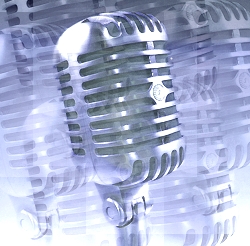Delay is very much what it’s described to be, it delays the signal. It can be a very noticeable effect on any instrument, most notably guitars.
The Edge from U2 is recognized for his use of delay, and it’s become a very common effect used in worship music as well.
Delay takes the original “dry” signal and repeats it as many times as we tell it to, at the tempo we tell it to.
Many consider delay to be an echo; technically a delay becomes an echo if we send the effect back into the input. Until then it’s still delay.
There are a few parameters to understand for generic delays. The first is tempo. The delay will delay and each successive repeat will be repeated at a certain time, which is called the tempo. If the beats per minute of the song are known, then the tempo can be set accordingly.
Most of the time, especially in live worship music and if the band isn’t playing to a click track, the tempo isn’t known to the sound tech. For this purpose, most delays come with a “tap” button. Tap the button to the beat of the song and the effect will repeat at that tempo.
On many units, the tap can be set for 1/4 notes, or 1/2 notes, or 1/16 notes, or 1/32 notes, etc. The common delay is 1/4 notes and the delay will be timed accordingly. If the tap is set for 1/16 notes, then the delay will be much quicker and if set to whole notes then the delay will be very slow. A good way to get to know your delay unit is through testing use of the tap button and tempo settings.
Delays also have a delay time setting. Delay time is sometimes in place of the tempo function. Sometimes the delay time is the function of the tempo. If the tempo is set, then the delay time can be changed to work with the tempo, making the delay faster or slower. This is another way of doing the changes in the beat times (1/4, 1/8, 1/16, 1/32) that was mentioned earlier by changing the tempo values.
Another parameter is feedback. This isn’t the bad feedback that we always worry about (ha ha). Feedback here is how many times the delay repeats. The higher the feedback, the longer the delay will repeat until it becomes inaudible.
Another common feature is “ducking.” The ducking level on many delay units determines how loud the delay level is heard when signal is present. So with delay on a singer and a ducker level on, when they start the next line and the delay is still going, it will lessen so that the next sung lines are clearly heard over the delaying audio.
Delay will often also have a master “mix” level. This just determines how loud the delay coming out is. It’s like the master volume on an amp or a mixer. So with a multi-effect unit, the mix level is sometimes for all the effects, but some will have individual mix levels for each effect.
I like to use delay almost exclusively on vocals, as electric guitars usually have their effects dialed in. That said, the level to set for the delay varies for each use. During more upbeat fast songs, a delay is usually best used with a very short feedback and quick repeats, which means that most people won’t even hear the delay; what the delay does when it’s really quick (usually anything under about 500 ms) is thickens up the vocals.
There are certain points in songs, and certain songs overall (generally slower songs) where the delay can be heard as an audible effect and it adds a great feel to the song when used correctly. But don’t go overboard with delay because what it ends up doing is distracting from the main song. We want the delay to add to the song, not make people hear it and say “Oh listen, delay!”
Delay is a great tool. I use it all the time and I love it! But as noted before, use it with caution. During a band practice, crank it up and listen to what each setting can do—the more you experiment the better you will get with it.
Derek Sexsmith is the director of technical services at Heritage Park Alliance Church in Windsor, Ontario, Canada. His blog, dereksoundguy.com, chronicles his experience working on the technical aspects of a church. Also follow him on twitter @dereksoundguy.





















